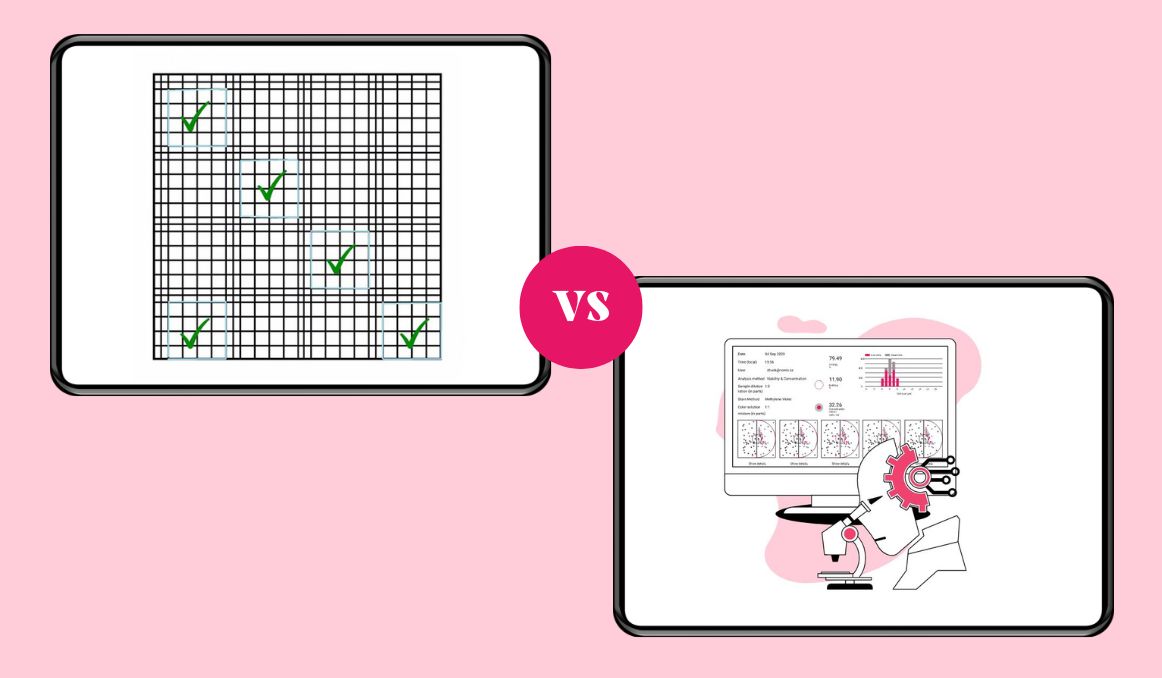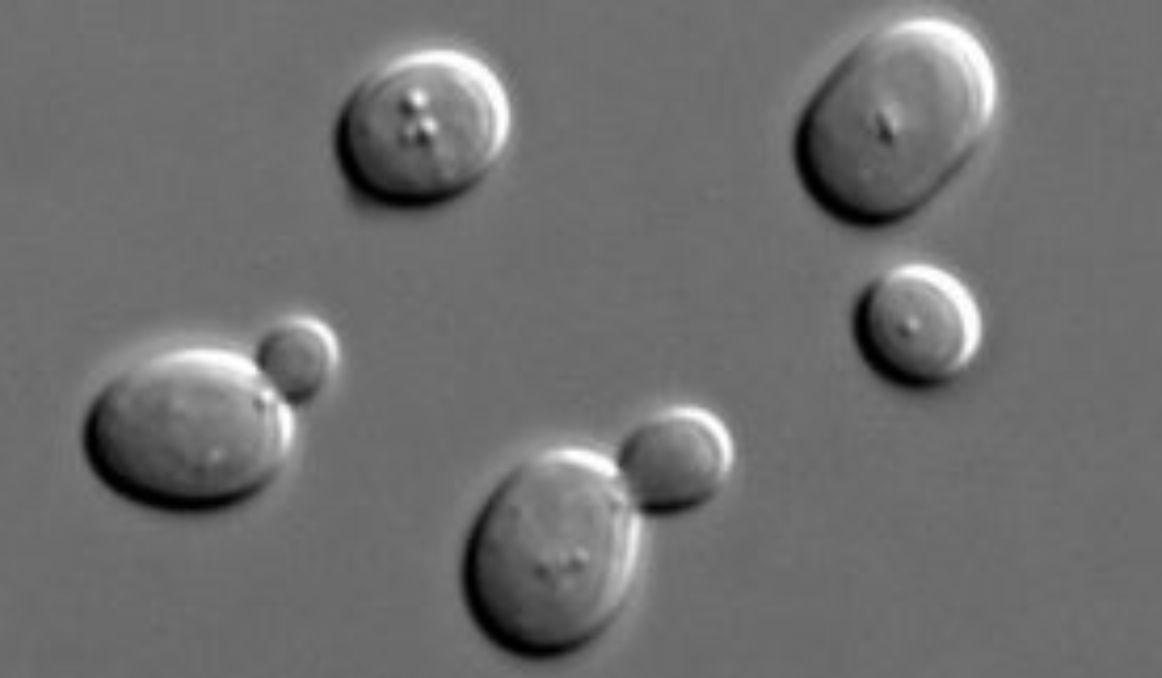Hemocytometer vs Automated Cell Counter: The Pros and Cons
We’re living in amazing times. The number of microbreweries grows by the day, brewers are experimenting more than ever and we’re seeing techniques, innovations, and new beer flavors, colors, and textures like never before. And much of this whole movement is due to the versatility of a single ingredient essential to brewing: yeast.
And as in beer-making, like in many other industries, for that matter, science is creativity’s best sidekick, brewers have quickly come to learn that there is simply no way to constantly innovate playing “by ear.” You need to be on top of the fermentation process at all times. And this means being able to monitor your yeast.
And with yeast cell concentration and yeast viability being the two most important parameters, brewers are now looking into the best way to collect this data, leading to the main question of this article: hemocytometer versus automated cell counter – which should I choose?
Let’s dig into it.

Counting yeast cells using a hemocytometer
A hemocytometer, also known as a counting chamber, is a microscope slide with an engraved gridded area used for counting different types of cells. There are many types of hemocytometers, each with its own specificities, but the most commonly used are the Neubauer (Thoma) Chamber and the Neubauer Improved Chamber.
To do yeast cell counts with a hemocytometer you need a microscope, a counting chamber, and the yeast sample. You also need a coverslip, your diluted sample, and a Pasteur pipette. If you want to do a viability test as well (to check the percentage of yeast cells that are alive), you’ll also need to stain the sample.
Now, hemocytometers are so designed that the area bounded by the engraved lines is known. The depth of the chamber is also known and typically printed on the chamber itself. The moment a coverslip is placed, a particular volume is defined, making it, therefore, possible to calculate the yeast cell concentration for the whole volume of fluid.
The principle is rather simple: you count the cells and you extrapolate for the entire volume. And if you’re also doing a viability test, you’ll simply count the number of cells that are alive, which will be colored differently than the dead cells, and then calculate the percentage. However, counting cells under a microscope relying entirely on one’s sight, focus, and the capacity of judging a color (in case of viability tests) is far less of an easy task than it might seem at first.
That’s why several methods have been developed for each type of chamber with strict rules put in place in order to reduce human error as much as possible.
For more about the most common methods used for cell counting with a Thoma or a Neubauer Improved chamber, check out the Cell Counting Methods PDF Guide (35 pages with detailed images) put together by our specialists, Dr. Katja Schulze, who specialized in bioinformatics and image recognition of microscopic images, and Dr. Ulrich M. Tillich, who specialized in laboratory automation.
What are the advantages of counting cells with a hemocytometer?
The most obvious and seemingly biggest advantage of hemocytometers is that they at least appear to require a relatively low investment, which makes them attractive for those working with a limited budget. However, to the low cost of the counting chambers, one must always add the ongoing and significant costs for the labor required, which can really add up in time.
What are the disadvantages of hemocytometers?
As it has probably become clear from what has already been said, the most important disadvantages of hemocytometers are a reduced accuracy caused by a high risk of human error, high labor expenses, and restricting the range of who can actually perform the counts to a very limited number of people, often to a single lab person.
This, of course, can be less problematic in a scientific environment, with highly trained people who develop and work on their own projects usually for years in a row. But in breweries, where lab settings are not such frequent occurrences, where there is little time for training, where people change jobs frequently, and where even, some argue, the pandemic had created a hiring crisis, the situation is completely different.
There is simply no time to train brewers to use a hemocytometer, let alone have them do the cell counts themselves on a daily basis. And yet, knowing your yeast cell count and yeast viability is paramount for obtaining high-quality beer consistently. For more on that, check out these detailed articles on the importance of these two measurements in brewing:
And to add insult to injury, in order to prevent any errors, in manual counting all steps must be written down. Because, for instance, if you have to dilute the sample more than once, or if you’re diluting it with dye a second time, for the viability test, it is very easy to make a mistake and this will impact the accuracy of your results.
And you might also want to get a manual clicker to reduce the risk of miscounts. Get two if you’re doing a viability test at the same time.
How about automated cell counters, then?
Hemocytometer versus Automated Cell Counter: Brewers Choice
It is difficult, if not downright impossible, to speak about all automated cell counters out there. But we can tell you why Oculyze is the system of choice for so many brewers from all over the world, from our first-hand knowledge of the system, but also from the feedback we’ve gathered over the years since Oculyze BB was first launched. For more on that, you can also browse our interviews and reviews pages.
So here is what an automated yeast cell counter can do for you and what its advantages are in comparison to using a hemocytometer:
It eliminates human error
There is simply no comparison between the levels of accuracy you can obtain with an automated cell counter versus a hemocytometer. Can you get accurate results with a hemocytometer? In principle, yes, if the person using it has experience with doing cell counts and performs every step perfectly. Can you get accurate results consistently with a hemocytometer? Well, here is where it gets tricky. For one, the general recommendation for obtaining consistent results is to have the same person doing the counts. But, as we’ve discussed, this can be very tricky for breweries. Secondly, certain samples can pose difficulties even for the most experienced operators.
Example 1: Counting budding cells
For instance, let’s take budding cells. Yeast can reproduce asexually, through a process known as budding, during which the nucleus of a mother cell will split, creating a small daughter cell. Once the daughter cell is large enough to separate from the mother, that one cell will become two.

Now, The American Society of Brewing Chemists (ASBC) recognizes budding cells as two distinct cells once the daughter cell reaches 50% or more in the volumetric size of the mother cell. Any less than this and the mother/daughter is counted as one cell.
Taking this rule into consideration, the correct counting of budding cells becomes very important because the final concentration can be inaccurate if budding cells are not considered the way they should be.
But if you’re doing the count manually, you simply have to eyeball the size and make a judgment call. And this can be very tricky and it’s a notoriously prone to error process.
An automated cell counter can easily make the correct call when it comes to counting budding cells.
Example 2: Counting dyed cells for the viability test
Viability tests via yeast staining rely on a very simple principle: live yeast cells can metabolize out the dye, so they will appear clear, while dead cells cannot do that and they will remain colored. In reality, things are a bit more complicated and often the accuracy of the viability assessments depends on the subjectivity of judging a color. This is particularly true when using methylene blue as a staining agent, as you’ll end up with cells in different shades of blue and you’ll have to be able to distinguish between them. A better alternative is to use methylene violet as a staining agent, but even then it is not as easy a task as it seems.
An automated cell counter can easily distinguish between different shades of color, being far more accurate when it comes to viability tests.
It is very fast
The Oculyze Automated Cell Counter is 10 times faster than manual counting. You simply take a few pictures of your yeast and you receive the results – for cell concentration and viability in one go – almost instantaneously.
It eliminates the need for a large dedicated workspace
The Oculyze microscope is tiny and it can be connected to the app via your phone, tablet, or desktop. Brewers often keep it with them on the floor and they can easily do an analysis whenever needed. No lab or other dedicated workspace is needed.
Zero expert knowledge needed
The Oculyze automated yeast cell counter can be used by anyone, even by those with no knowledge of cell counting whatsoever. You just load the sample chamber with the diluted sample and put it into the microscope, connect the microscope with your device and open the app, take some images moving the sample into its predefined positions and you can see the results directly in the app.

You can easily transport it between venues
If your brewery has more than one venue, working with Oculyze instead of a classical microscope and a hemocytometer makes it far easier to simply transport the microscope where you need it. Which, of course, in turn, saves you time & money and overall optimizes the whole process.
Extra features
Last but not least, automated cell counters may come with extra features that you’re obviously not getting from a hemocytometer. The Oculyze app, for instance, includes a pitch rate calculator, budding index, fermentation tracking (allowing you to monitor your fermentations from the moment you’ve pitched the yeast and up until the end), a yeast size histogram and, last but not least, easy access to all your previous data.
Ultimately the decision is yours and depends on your brewery’s needs and specificities. Now you know what to consider, though, which should hopefully help you choose the best option for you.
Cheers!
If you’re interested in finding out how you can use our technology to control fermentation and monitor your yeast, save work hours, and improve the cost-efficiency of your business, drop us a line at [email protected] or check out our product pages:
- Oculyze BB 2.0 (Better Brewing) Yeast Cell Counter App + Hardware
- Oculyze FW (Fermentation Wine) Yeast Cell Counter App + Hardware
Also, you can now get access to a fully functional demo account to test our Web App. Completely free of charge and with no commitment to purchase.


